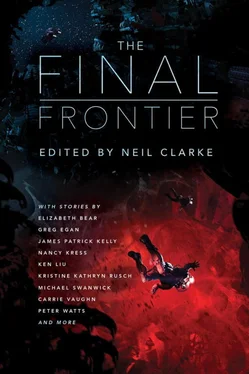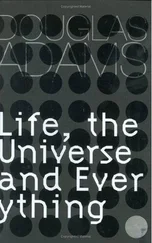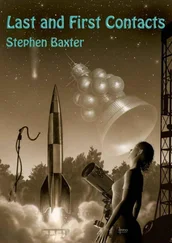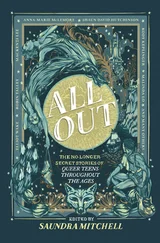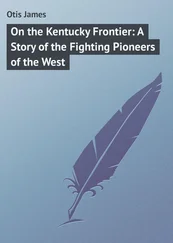As though this spectacle was not wonderful enough, I saw that around me, on either side and above and below, there was life. There were fish shapes, and round shapes, and long, tubular shapes, all moving with some kind of propulsion or undulation. They shimmered the way that altmatter does to the human eye, and some had their own lights, like the fish of the deep sea. These latter ones also had enormous dark spots on their bow end, like eyes. What worlds had birthed these creatures? Had they evolved in a gas cloud, or in the outer atmosphere of some star? They were so fantastic, and yet familiar. Our universe is, we know, mostly made from other kinds of matter than ourselves, but I hadn’t imagined that altmatter could be the basis for life. It occurred to me now that altmatter life might be much more common in the universe than our kind. Space is so big, so empty. We have always assumed it hostile to life, but perhaps that is true only of our kind of life, made of ordinary matter.
For the next two days I prepared radar clips and visual clips to send home, and watched the play of life around me. I have seen what seem to be feeding frenzies—the behemoth feasted on those wheeled creatures—and I might have witnessed a birth.
Today I saw a new creature, twice as long as the behemoth I had first set my eyes upon. It had armor plating with fissures between the plates, and apparent signs of erosion (how?), as though it was very old. It trailed a cloud of smaller creatures behind it, evidently attendant upon it. Its round hole of a mouth was fringed with a starburst of tentacles. I was musing on the problem of the radar imaging system’s resolving capacity, wondering what I was missing in terms of smaller-scale life in the life-rich current—when I saw the leviathan’s mouth widen. It was at this point ahead of me and to one side of the ship, so I couldn’t see the mouth, but I inferred it from the way the tentacles fringing the orifice spread out. To my astonishment a great, umbrella-shaped net was flung out from the fringes of the mouth, barely visible to my radar. This net then spread out in front of the creature like a parachute; the creature back-finned vigorously, slowing down so abruptly that a number of other swimmers were caught in the web. Had I not swerved violently, my craft and I would have been among them. The acceleration might have flung me across the chamber and broken some bones, had it not been for the inertial net, which thickened astonishingly fast. (That the ship suffered no great damage is a testament to the engineering skills of the great generation-ship builders of old, my craft being a modified version of one of their shuttles).
Now that the Ashtan system is nearly upon us, I have a new worry. I don’t know whether the Antarsa current flows through any celestial objects, such as the sun, or a planet, or a moon. If it does, I must manipulate the altmatter sails in time to escape a violent crash. I am afraid something like this might have happened to the altmatter probes that were first launched from Dhara, that stopped sending back radio signals. Or perhaps they were swallowed by some creature.
Strangely, the current appears to be slowing; this would be a relief if it wasn’t laced with chaotic microflows. I can sense them through the way they make the sails shiver, something I could not have told a few years ago. Sometimes I feel as though I can see the current with some inner eye, almost as though it has acquired a luminosity, a tangibility. I imagine, sometimes, that I can feel it, very faintly, a feather’s touch, a tingling.
I have a sense of something about to happen.
What can I say, now to the dark? How do I explain what I have experienced to my kin on Dhara? What will you make of it, my sister Parin, my brother Raim? What stories will you now tell your children about Mayha, Moon-woman?
Nothing I once assumed to be true appears to be true.
As we entered the Ashtan system, the Antarsa current became chaotic on a larger scale. At that point I was not far from the second planet, Ashta, with its two lumpy little moons. Navigation became very difficult, as there were eddies and vortices and strong, dangerous little currents. There is a backwash from Ashta itself, I am convinced. This can only be the case if Ashta has a core of altmatter. Otherwise wouldn’t the Antarsa wind simply blow through it, without becoming so turbulent?
This is not surprising. On Dhara there must be altmatter within the planet, else how would the devtaru have drawn it up? On Dhara, however, the Antarsa current does not go headlong through the planet, nor is it so wide. There is only a soft breeze through the planet, with the current itself running perhaps two hundred thousand kilometers distant. Here a broad channel of the current rushes through a region occupied by part of Ashta’s orbit, and includes the tiny, uninhabitable inner planet and the sun. Depending on how much altmatter there is in these celestial objects, there is likely to be quite a backflow, and therefore much turbulence. A mountain stream studded with rocks would behave the same way.
For a long while, I was caught in the rapids. Caught with me were other creatures, altmatter beings of a fantastic variety, swimming valiantly, changing course with an enviable dexterity as the currents demanded. My hands were sore from manipulating the sails, my mind and soul occupied with the challenge of the moment, but the ship’s AI managed to send a message in Old Irthic to Ashta. There was no reply but the now familiar silence.
I now know why. Or at least, I have a hypothesis. Because I have seen things I can hardly yet comprehend. I will not be landing on Ashta. It is impossible, and not just because of the turbulence.
This is what I saw: The day side of Ashta, through my telescope, showed continents floating on a grey ocean. There were dark patches like forests, and deserts, and the wrinkles of mountain ranges. I saw also scars, mostly in the equatorial belt, as though the planet had been pelted with enormous boulders. Most dramatically, the edges of the continents seemed to be on fire. There were plumes of smoke, mouths of fire where volcanoes spoke. In the interior, too, the scarred regions were streaked or lined or edged with a deep, red glow, and there were dark, smooth plains, presumably of lava. I imagined the invisible Antarsa current slamming into altmatter deposits deep within the planet, the impact creating internal heat that liquefied rock, which erupted volcanically onto the surface. There must be earthquakes too, on a regular basis, and were there not forests on fire?
That the forests were there at all spoke of a kinder past. Perhaps the Antarsa current had changed course in recent geological time? Now Ashta was a planet in the process of being destroyed, if the current didn’t push it out of orbit first. I had never seen a more terrible sight.
But as we got closer, I saw much more to wonder at. The radar picked up something thousands of kilometers in front of the planet.
It first appeared as a roughly rectangular shadow or smear, very faint, that later resolved into a great array—a fine mesh of some kind, reminiscent of the net of the altmatter creature who nearly ate us. But this was on a massive scale, stretching across much of my view of the planet. Studded within it at regular intervals were lumps that I couldn’t quite resolve—knots or nodes of some kind? No, too irregular. The net seemed to be held in place by beings, crafts or devices (I couldn’t tell the difference at this distance) at corners and along the perimeter so that the whole thing sailed along with the planet. Its relative indifference to the chaotic Antarsa current indicated it was made of ordinary matter. Getting closer, I found that the lumps were creatures caught in the net, struggling. There was an air of great purpose and deliberation in the movements of smaller objects about the net—these craft, if that is what they were, appeared to buzz about, inspecting a catch here, a catch there, perhaps repairing tears in the net. It might have been my imagination but the creatures became still once the busy little craft went to them.
Читать дальше
